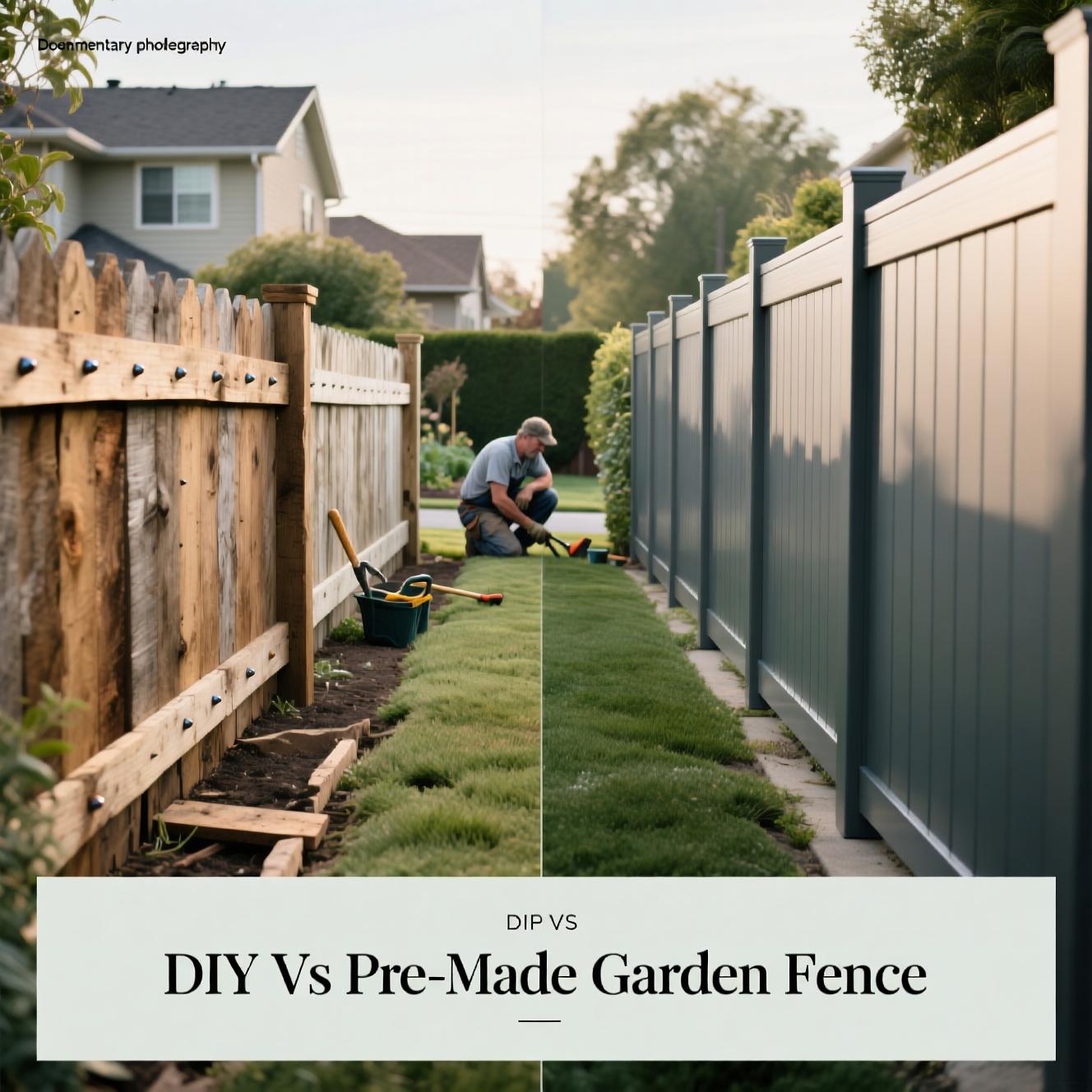What factors influence the choice between DIY and pre-made garden fences?
Deciding between a DIY garden fence and pre-made panels hinges on balancing creative control, installation speed, and budget. DIY fences offer high adaptability to yard contours and complete customization, while pre-made panels generally provide a faster installation process.
| Feature | DIY Garden Fence | Pre-made Garden Fence |
|---|---|---|
| Customization Options | High | Low |
| Installation Time | Longer (days/weeks) | Quicker (hours/days) |
| Terrain Adaptability | High (follows contours) | Low (best for flat surfaces) |
| Material Quality Control | High (selective choice) | Variable (can be less durable) |
How do installation costs compare for DIY versus pre-made garden fences?
The installed cost of a DIY garden fence can be competitive, often ranging from approximately $5.25 to $18+ per linear foot depending on material quality. While pre-made panels may appear cheaper upfront, their actual installed cost can be comparable, especially when considering potential repairs for less durable options. Professional installation for a DIY-style fence can cost around $27 per linear foot, whereas tackling it yourself might reduce this to about $25 per linear foot.
| Fence Type | Estimated Installed Cost (per linear ft) | Notes |
|---|---|---|
| DIY (basic materials) | $5.25+ | Material quality varies cost |
| DIY (higher quality wood) | $18+ | Significant customization potential |
| DIY (professional install) | ~$27 | Labor-intensive build |
| DIY (self-install) | ~$25 | Lower material cost possible |
| Pre-made Panels | Comparable to DIY | Durability can be a concern |
What is the typical time commitment for building a garden fence yourself?
A DIY garden fence project, especially a stick-built one from unassembled materials, demands a significant time investment. While it can offer substantial cost savings compared to professional installation, expect to dedicate many hours or even days to completion. Building over 200 feet of fencing might take approximately 3 to 5 days, factoring in tasks like digging post holes and setting posts.
| Fence Project Aspect | Estimated Time Commitment |
|---|---|
| DIY Stick-Built Fence (under 200 ft) | Many hours/days |
| DIY Stick-Built Fence (over 200 ft) | 3-5 days |
| Pre-made Panel Installation (with proper prep) | Potentially one weekend |
How well do pre-made garden fence panels accommodate sloped terrain?
Pre-made garden fence panels are best suited for flat ground, as adapting them to slopes presents challenges. On inclines, panels must be installed in a staggered, “step-like” pattern, which can create triangular gaps between the fence bottom and the ground. These gaps may compromise security and aesthetic uniformity, especially on steeper slopes where significant staggering is required.
| Terrain Type | Pre-made Panel Installation Method | Potential Issue |
|---|---|---|
| Flat Ground | Straightforward installation | None |
| Gentle Slope | Staggered (“step”) installation | Triangular gaps at ground level |
| Steep Slope | Significant staggering required | Large, unavoidable gaps; potential instability |
| Uneven Ground | Difficult to adapt consistently | Compromised uniformity and security |
How does garden fence material choice impact its longevity?
The lifespan of a garden fence is heavily influenced by the materials selected. Untreated wood fences typically last 5 to 10 years, while pressure-treated wood can extend this to 10 to 20 years, depending on environmental factors and treatment quality. For enhanced durability, using rust-resistant fasteners like galvanized steel is crucial to prevent structural degradation over time.
| Material Type | Projected Service Life (Years) | Primary Durability Concern |
|---|---|---|
| Untreated Wood | 5 – 10 | Rotting, insect damage |
| Pressure-Treated Wood | 10 – 20 | Splintering, warping |
| Galvanized Steel (posts/fasteners) | 20+ | Corrosion over time |
| Vinyl | 20 – 30+ | Fading, brittleness in extreme cold |
How do DIY versus pre-made fences handle yard contour variations?
DIY garden fences offer superior adaptability to uneven terrain and yard contours, allowing for a fence line that precisely follows natural slopes and elevations. This flexibility helps avoid gaps and maintain a continuous, secure barrier. In contrast, pre-made panels are best suited for flatter areas; installing them on slopes often necessitates a staggered approach, which can lead to gaps and aesthetic inconsistencies.
| Terrain Challenge | DIY Fence Adaptability | Pre-made Panel Adaptability |
|---|---|---|
| Significant Slopes | High (follows contour) | Low (requires staggering, potential gaps) |
| Minor Unevenness | High (customizable fit) | Medium (may require panel modification) |
| Flat Ground | High (straightforward installation) | High (ideal for panel installation) |
| Customization Needs | High | Low |

Angelina Everly leads the editorial desk at Live Green Gardens, blending practical plant care, hands-on product testing, and approachable outdoor styling. She focuses on step-by-step how-tos, buyer’s guides, and small-space makeovers that work in real life and real budgets. When she’s not comparing pruning shears or setting up a drip kit, you’ll find her creating cozy corners with planters, solar lights, and pollinator-friendly picks—always with clear pros/cons and safety notes so you can buy once and garden happy.

